| By: Paul S. Cilwa | Viewed: 4/20/2024 Occurred: 4/1/1999 |
Page Views: 1511 | |
| Topics: #Iceland #Travel | |||
| All about my April, 1999 trip to Iceland. | |||
Land of Fire and Ice
Two Days In Iceland
I traveled a lot for my job as a computer programming instructor. In April, 1999, I was scheduled to teach in Munich, Germany. However, my passport was stolen (see Passport Hell) and I wound up flying to Europe on my original ticket a month later.
That original ticket was on Iceland Air. Their special deal is a very reasonable price to Europe, as long as you go by way of Iceland…and you even get to spend three days and two nights there, with hotel included!
After teaching for the week in Munich, then, I flew from there to Frankfort, there to catch the flight to Iceland. However, my flight from Munich left very late…and I missed my connection. The best flight I could get took me through Copenhagen, and didn't get me to Reykjavik until quite late in the evening, so that, in effect, I missed the first of my three days.
I had already been to little Keflavik airport once, on my way "across the pond"; this time I got to pass through Icelandic customs and take the paid-for bus to the hotel thirty miles or so away in Reykjavik.
The sun never really set, of course; even southern Iceland is far too close to the Arctic Circle for true darkness to descend on a May night. But the next morning I left on a tour of the Reykjavik area.
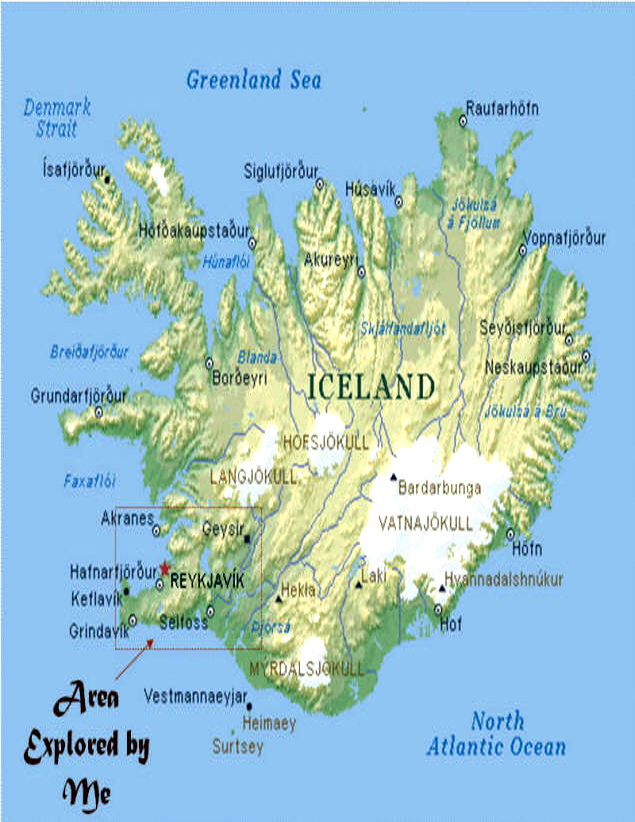
Iceland is a volcanic island but there are many tidal flats on its shores. This one is outside the capital and largest city, Reykjavik.
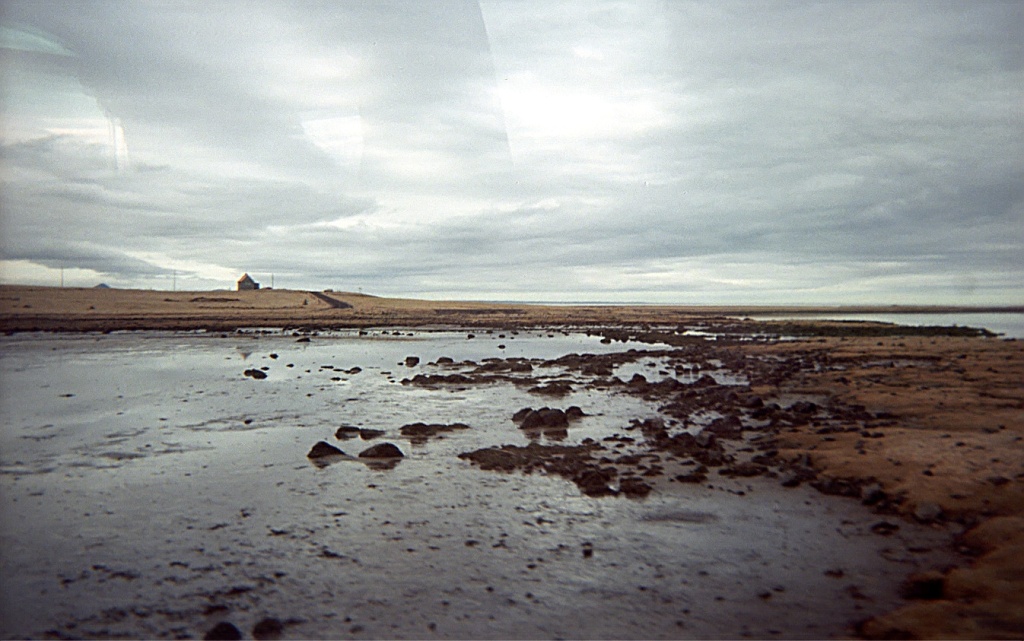
We drove through Keflavik, where the airport is located and a town in its own right. Iceland prides itself on its modern and unique architecture, which is mostly expressed in its churches.
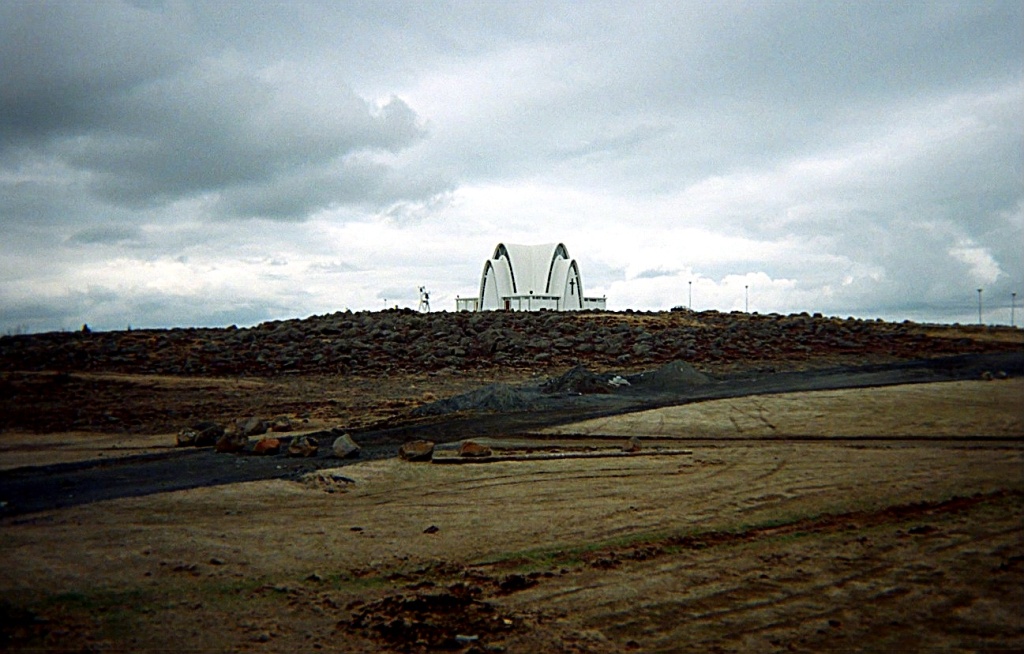
We then visited the small town of Grindavik, which had a combination museum/restaurant. After touring the museum, they served us lunch. I don't really remember what we ate, so it must not have been very weird.
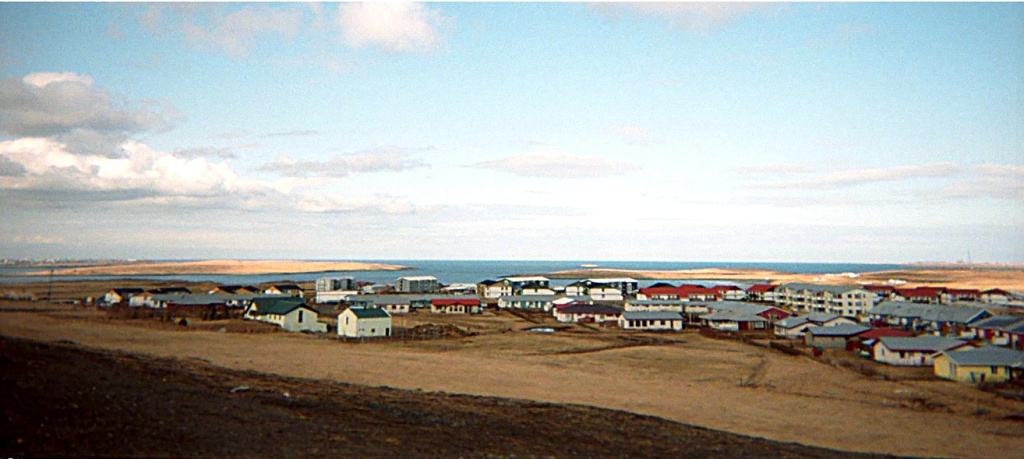
The tour included a visit to the "Blue Lagoon", a hot spring favored by people with skin conditions, as it has the reputation for being able to heal them. It's not a hot spring in the usual sense, as the water that comes out of springs in Iceland is hot enough to cook a lobster. Instead, they use the water from hot springs to heat cold spring water, and that's what you soak in.
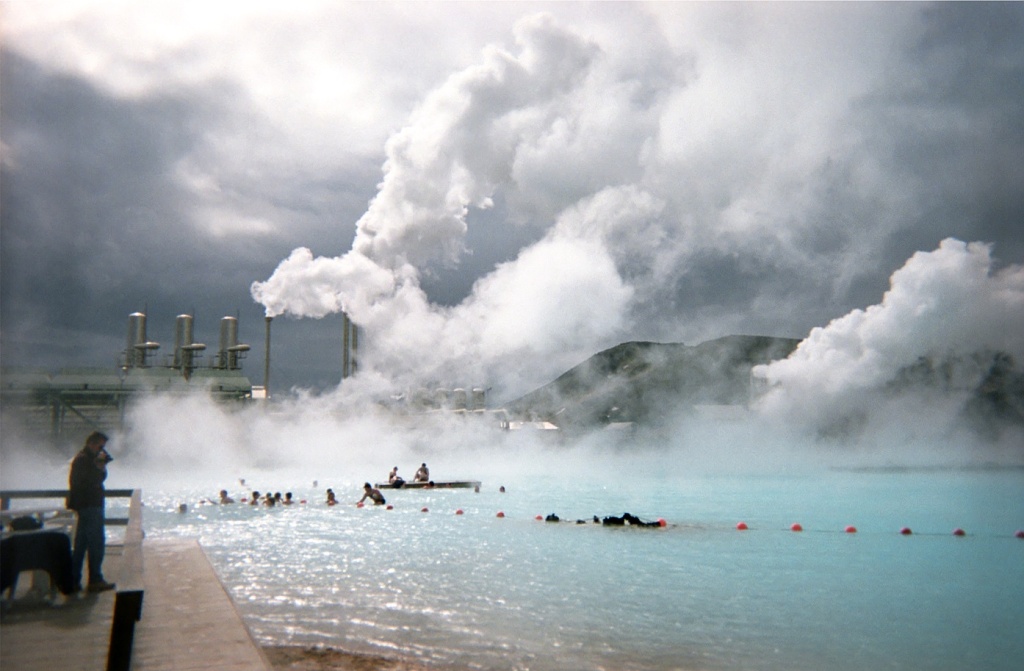
I know the clouds of steam make the water look dangerously hot, but it isn't that hot—it felt like pretty much normal Jacuzzi temperature to me.
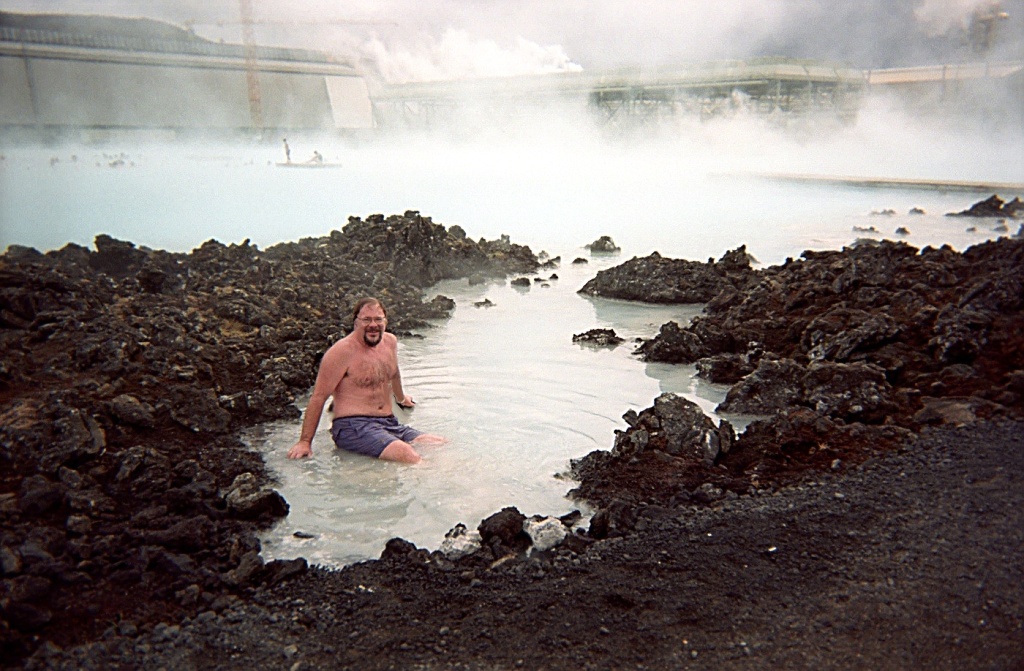
It's a fairly large area, and the temperature does vary to an extent. It's very cool to be able to swim in a hot spring; in North America, hot springs tend to be too small to do more than sit.
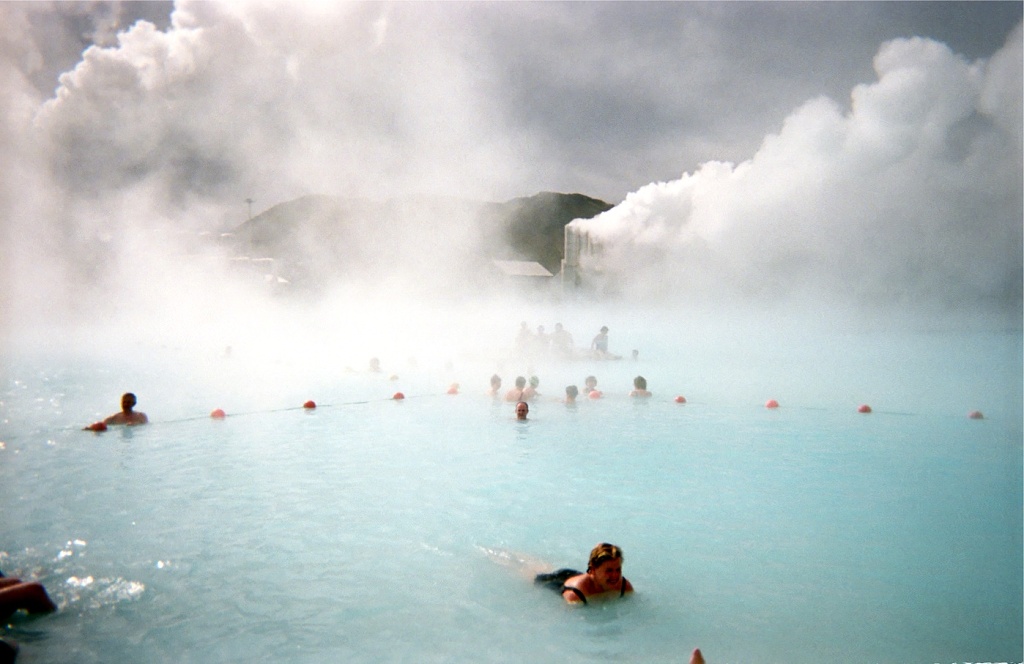
After a couple of hours at the Blue Lagoon, the bus called us out and we continued on the tour to Hafnarfjörøur Harbor. This harbor is a haven from the frigid north seas, but can only be accessed via an extremely dangerous inlet. Every year ships are lost there.
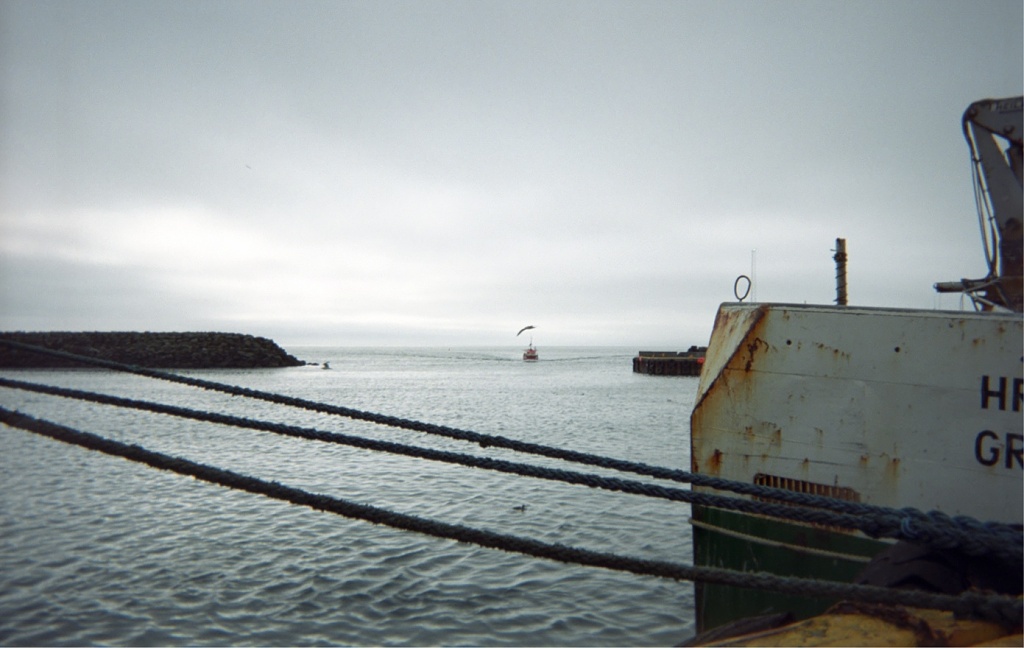
A visit to Iceland's craggy southwest coast revealed a landscaped tortured by the frequent earthquakes that shake this land.
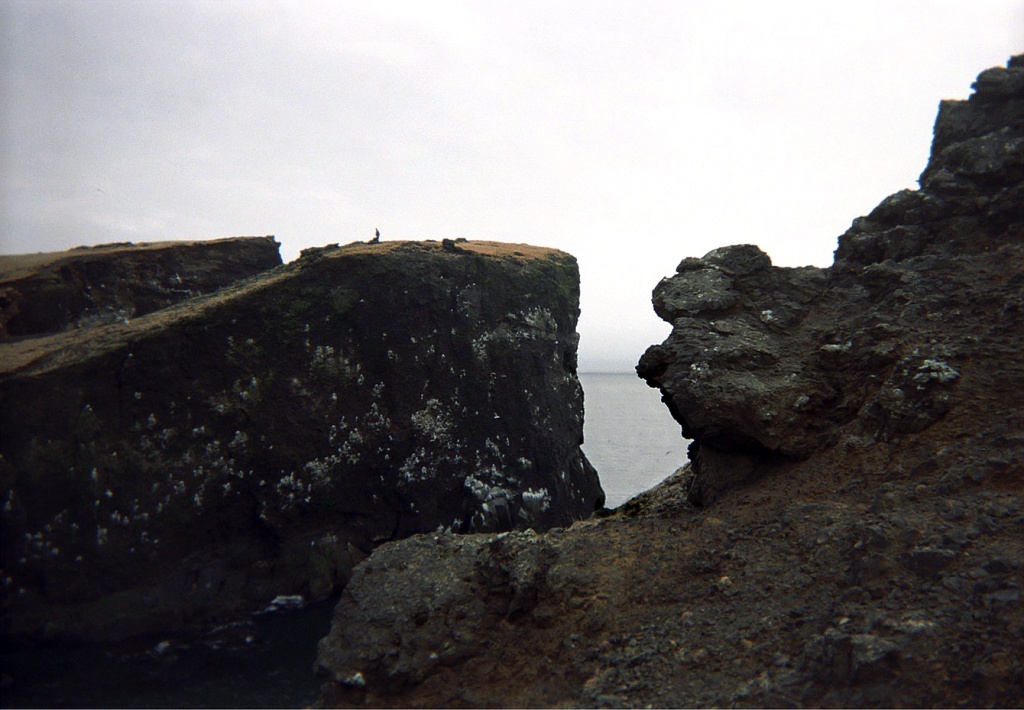
Because of its volcanic origin, the island doesn't have neat edges. This is not a place anyone would want to spend time playing on the beach.
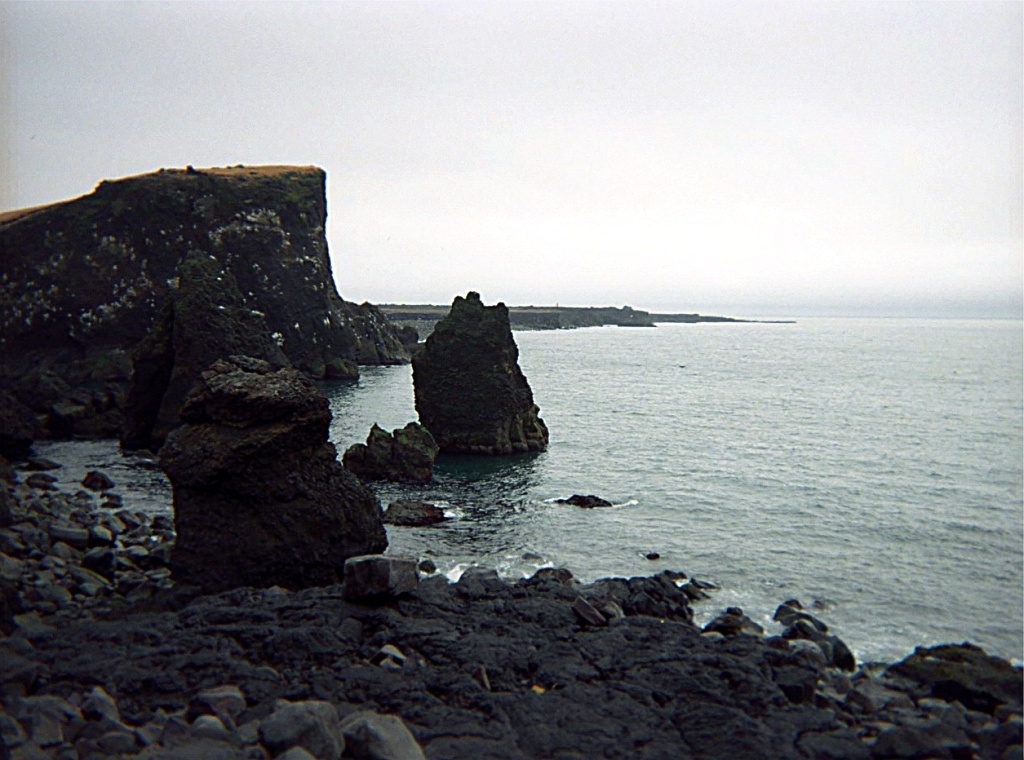
On islands in more temperate climes, off-shore islets usually grow plants or at least serve as home to birds or sea lions. This lonely sentinel seems to keep a dismal watch by itself.
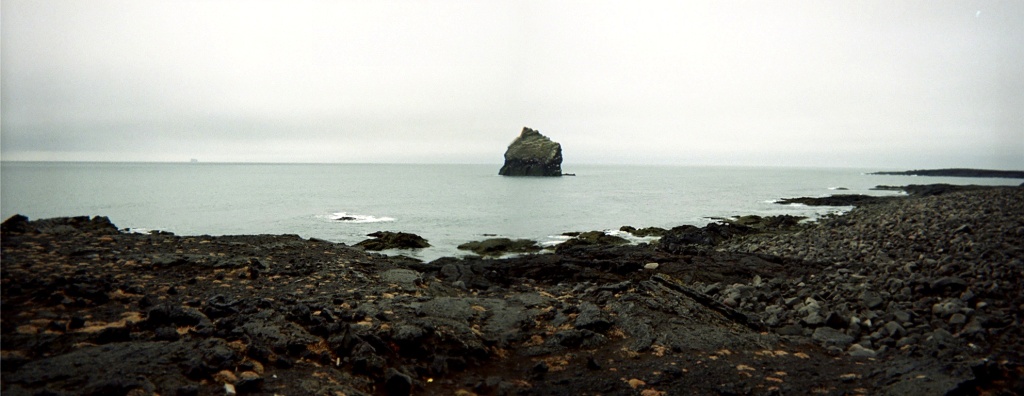
We were lucky in that an Icelandic movie company (in other news, there are Icelandic movie companies) had recently filmed a documentary on the settling of Iceland; and the sets were still up. It was built on the very same coast where the Vikings originally landed. Life was hard and cold…and there was no cable TV.
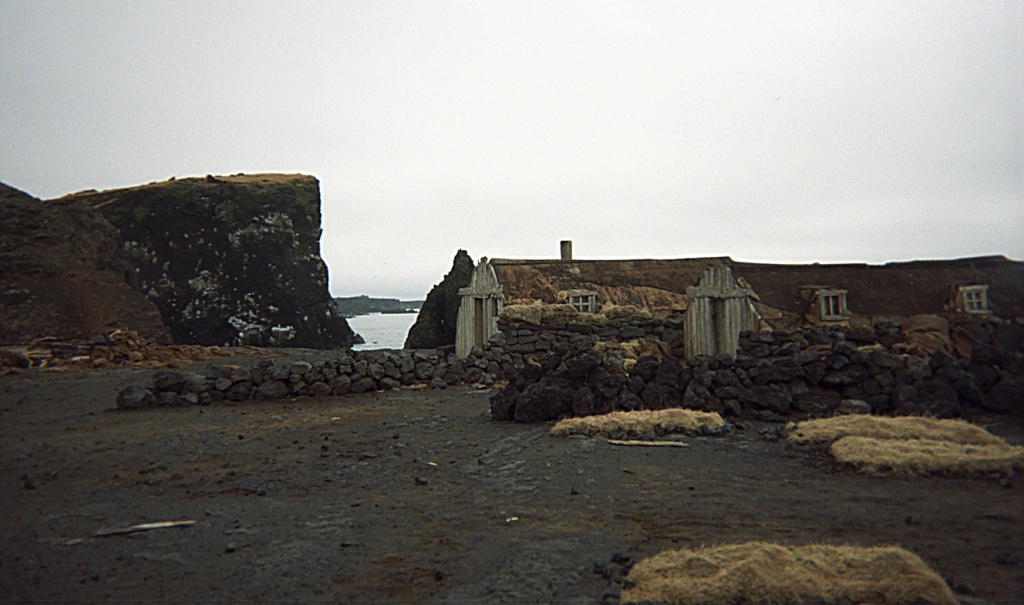
Running north and south along the northern Atlantic floor, the mid-Atlantic ridge marks the place where the North American and European tectonic plates are pulling apart, an inch or so each year. As the plates pull apart, magma from the inner earth wells up, forming the ridge, with a central rift continuing to tear at the middle.
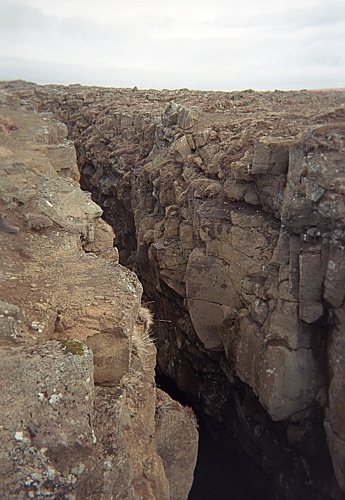
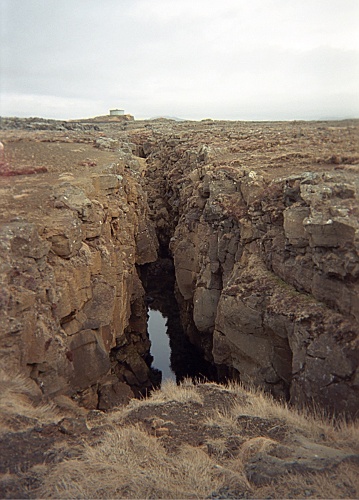
Iceland is the result of volcanic lava spilling up at a particularly wide rip in this ridge.
Here, the rip continues up through the land. We are looking North; on the right, the European plate; on the left, the North American.
And in this view, you can see the waters of the Atlantic where they pour into the ridge.
When my tour ended, I returned to the hotel to nap; then I took a bus into a random neighborhood and walked around. It was very clean, very neat, and vet quiet. I was the only only one walking about. I ate dinner at an Icelandic pizza place, very warm, with a fireplace. No one spoke English conversationally but my waitress had learned it in school and was delighted to have a chance to use it.
The next day I rented a car and headed into the southern interior of the island.
The road wound along mountain passes and ridges, overlooking Icelandic towns and great lava banks, some spilled just hundreds of years ago from a relatively recent eruption.
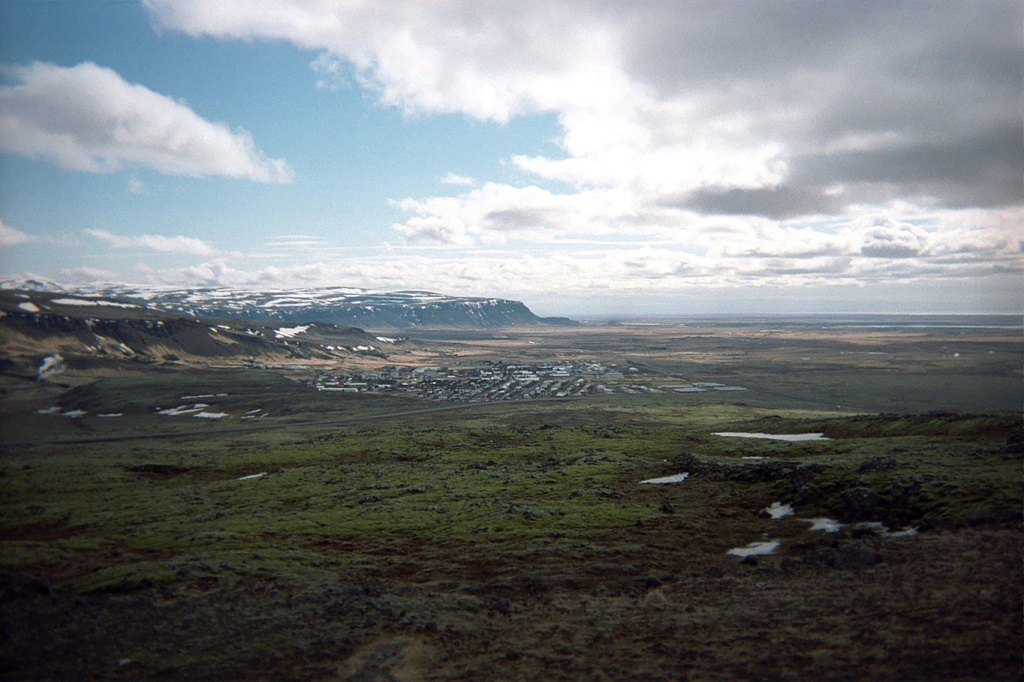
As I drove along, virtually the only car on the road, I couldn't help but note that, in Iceland, volcanoes are still very much present…and active. In fact, they were everywhere, in every direction, most emitting steam .
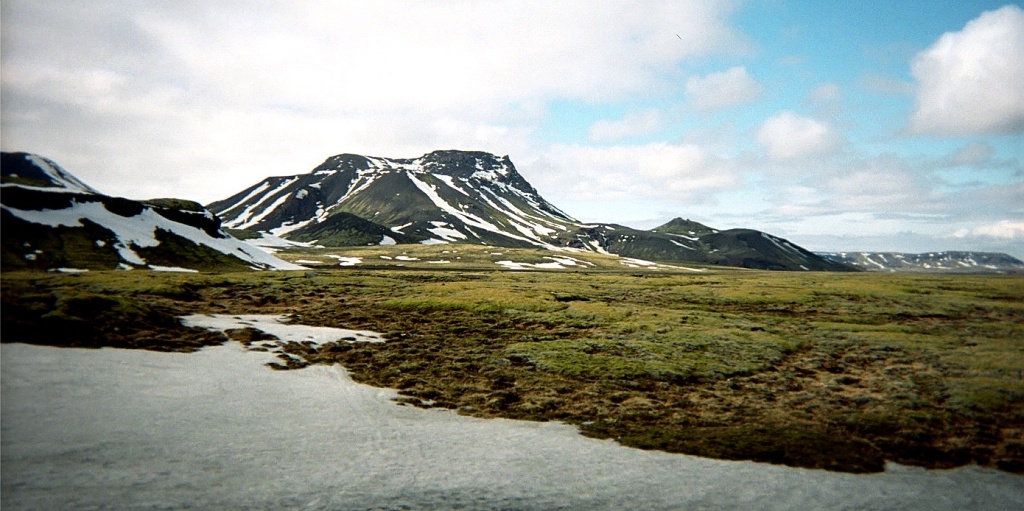
Present-day Icelandic horses are the descendents of the original horses brought by Viking settlers in the 13th century. They are short and sturdy, and prized the world over…but, when an Icelandic horse leaves Iceland, it can never come home. No horses are allowed to come onto the island, for fear of introducing horse diseases to which the native equines have no immunities.
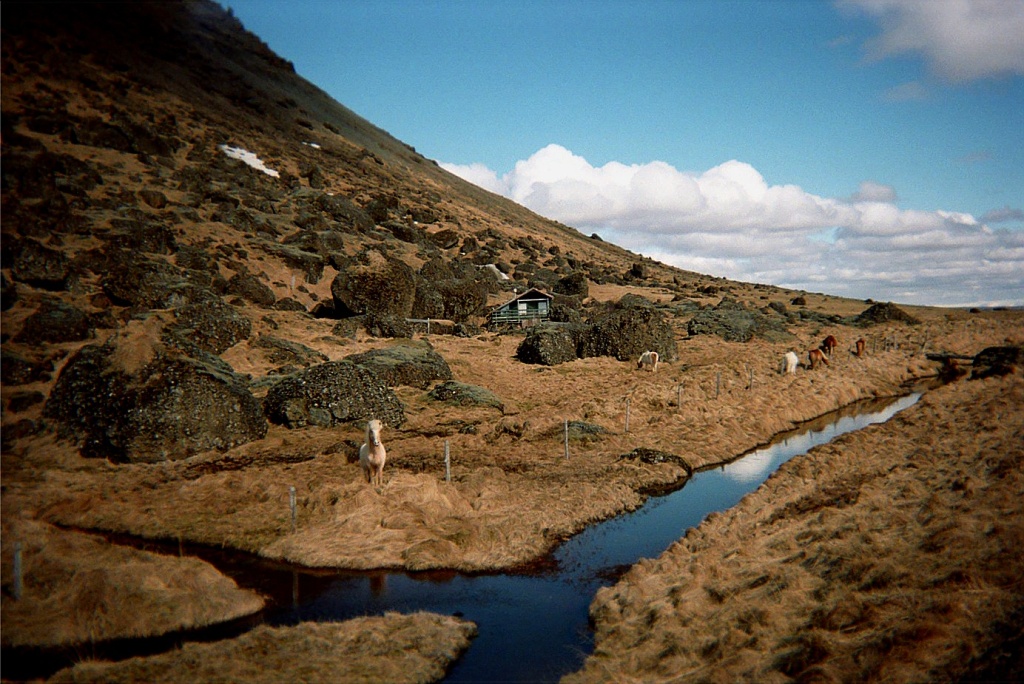
Iceland is sparsely populated; many areas are reachable only by dirt roads or less. This road leads to Geysir and Gullfoss, two of the country's most popular tourist spots.
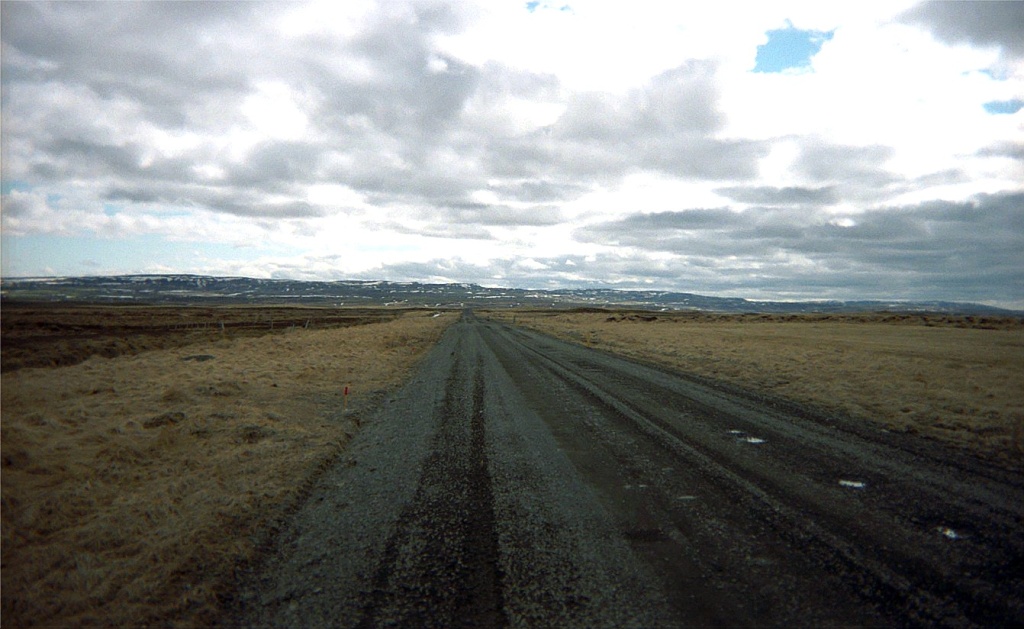
Iceland's Geysir is the original geyser after which all others are named. The area is littered with holes filled with boiling water. In one of them, the pressure from steam building up deep within the earth explodes every ten minutes or so, shooting a pillar of superheated water high into the air.
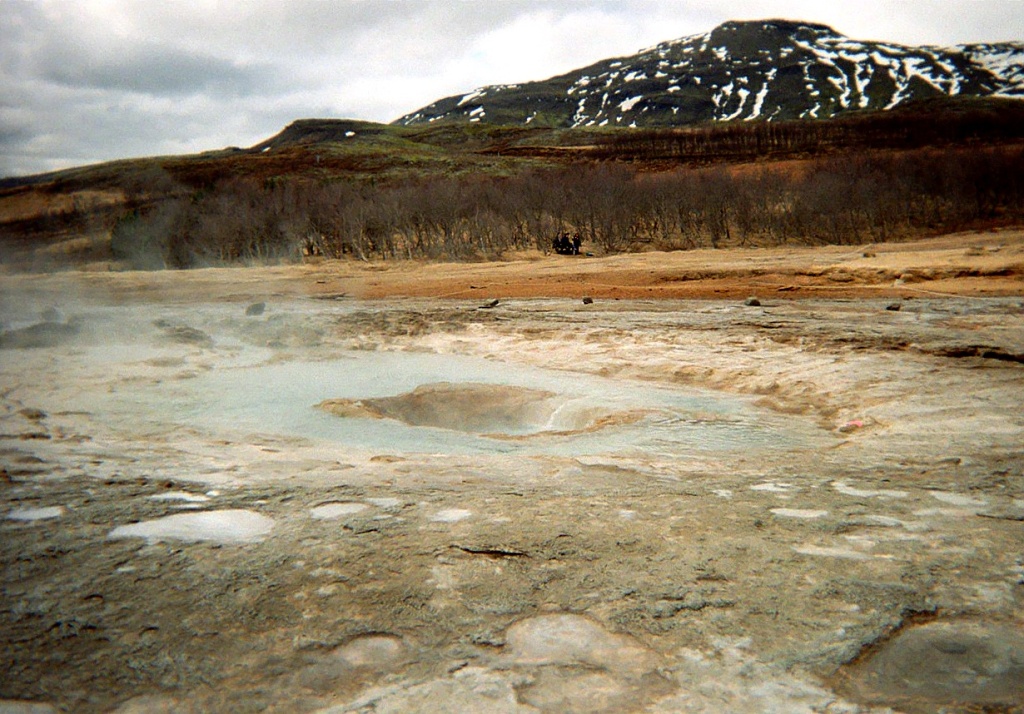
Signs in many languages warn against putting one's hand or anything else in any of the superheated pools, with temperatures far higher than boiling.

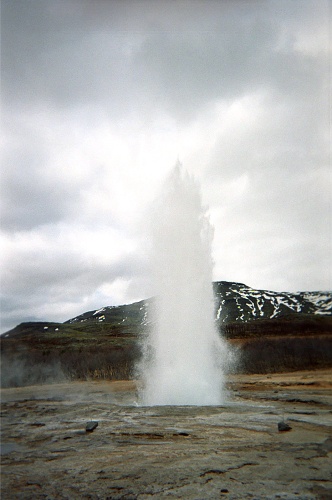
As at Old Faithful in America's Yellowstone National Park, signs predict the next eruption of Geysir. And, as at Old Faithful, it's explained that these things can't be predicted within a minute or so—you can't set your watch by them. Still, they erupt on a pretty predictable basis, as cool water seeps from the surface into deep underground pools, where it becomes heated and then superheated under pressure, until it explodes back upwards.
Unlike at Old Faithful, there are no fences to keep people out of harm's way. Signs, yes; fences, no. And there's nothing to stop you, between eruptions, from leaning over the geyser and taking a picture of the interior, as I saw some people do. The geyser does considerately grumble and hiss in the seconds before it explodes. But if you don't have the sense to get well back in time, well, your goose is cooked—literally.
Gullfoss is Iceland's largest and most beautiful waterfall. The word means "golden falls". The thunder is immense and can be heard a mile away.
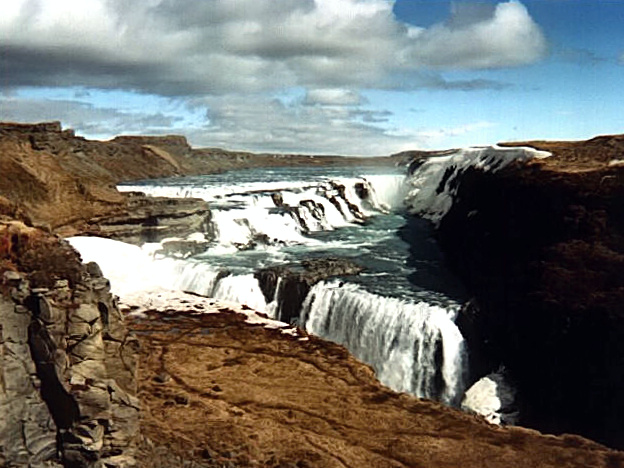
The eternal cold causes the mist from the waterfall to condense into snow and ice.
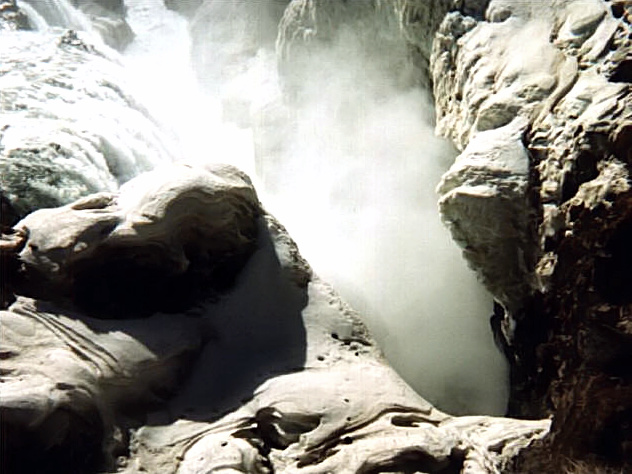
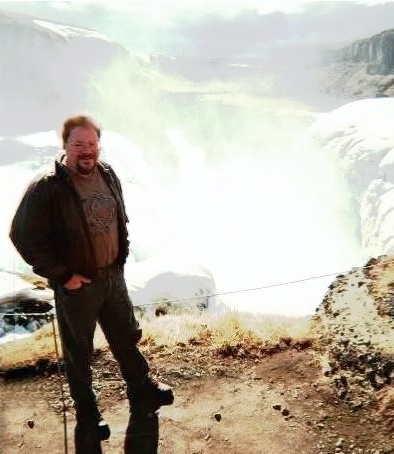
Gullfoss has been compared to Niagara Falls, which is probably reasonable if you take into account its presence in a country far smaller than the United States. The amount of water passing through it is far smaller, of course. Nevertheless it's a helluva lot of water. And, as a whitewater river rafter, I couldn't help but wonder…is this at all runnable?
I hadn't seen any brochures for rafting Gullfoss, but man…it sure would be one hell of a ride!
Gullfoss is a tourist attraction, though a very small one by North American standards. There was just one gift shop, that was it, and no admission to see the falls themselves.
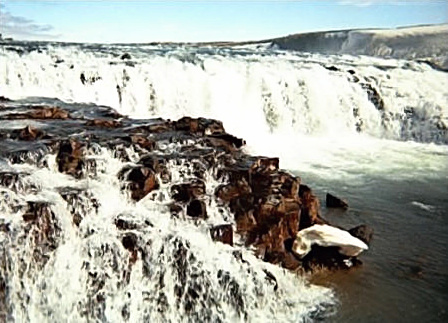
The gift shop sold film, postcards, and refrigerator magnets; but mostly it sold woolen goods. Wool is Iceland's primary export, and many Icelanders are employed in woolens mills churning out sweaters and other articles of woolen clothing.
But, actually, selling sweaters here made sense, since between the cool Icelandic spring climate and the mist from the waterfall, it got quite chilly.
By the time I got back to the hotel I was exhausted, and quite happy to go to sleep. It was up early of course for my return to the airport in Keflavik and the final leg of my journey home from Europe.
I do recommend visiting Iceland if you get the chance. It's one of the few places on Earth you can find, that doesn't look like anywhere else you've been!





